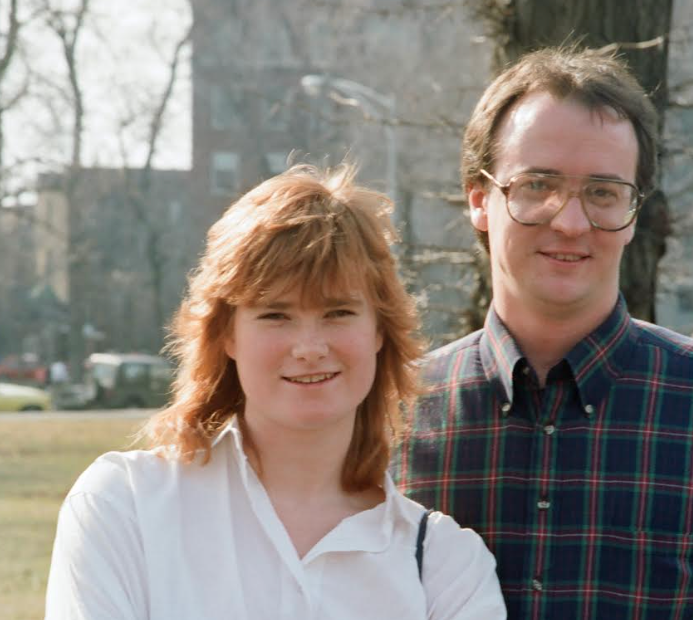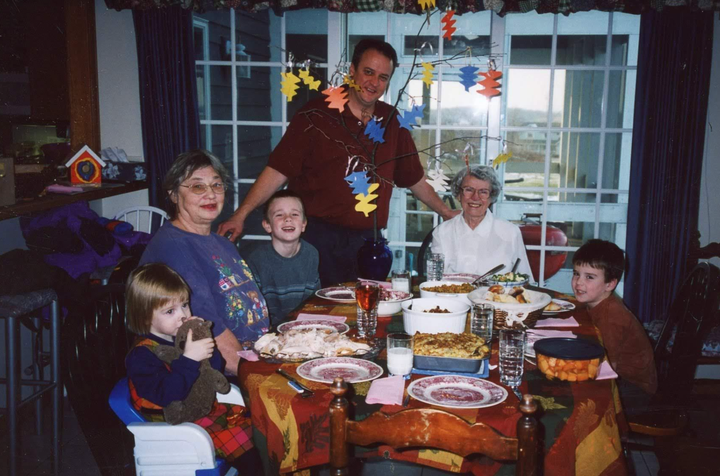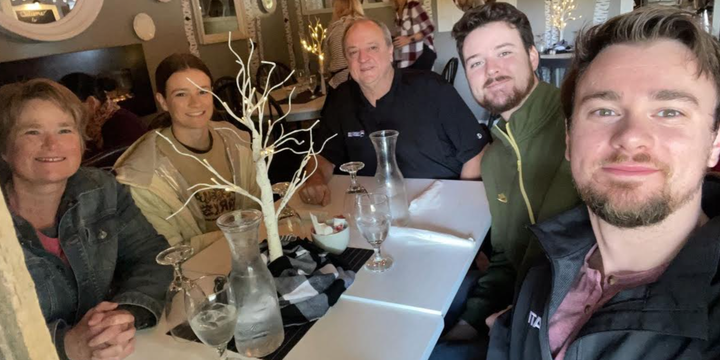
In the beginning, I doubted that attention-deficit/hyperactivity disorder (ADHD) was a real thing. I resisted the second-grade teacher who recommended my son EJ be tested, and I fought the doctor who called him fidgety and impulsive. There was no way in hell my husband and I were going to drug our son. We thought he was perfect already: smart, funny, curious and active. He just didn’t fit into their damn boxes.
On Halloween night 2003, in EJ’s third grade year, I saw “impulsive” in action when he bolted across the road to meet a friend, nearly getting smashed by a car in our suburban Chicago neighbourhood. Because of this danger and his new teacher’s comments about social troubles in class, my husband and I decided to get medication for our son.
They did what they were meant to do. EJ seemed happier and more in control of his behaviour.
It didn’t occur to me then that he might have inherited the ADHD from me. I was a 36-year-old English teacher with a minivan and a master’s degree — not a hyper little boy. There was a lot I was hiding, though. That minivan was a mess, my house a disaster. If a neighbour popped by uninvited, I’d chat at the half-open front door and use my body to block their view of the kitchen, too embarrassed to let anyone see the heap of days-old dishes in the fancy sink and last week’s groceries cluttering the expansive island. “Thanks for stopping,” I’d say, instead of asking her in for coffee. I knew I didn’t deserve this beautiful home and because of the shame, I kept most friends at a distance.
Even though I wanted to clean, I was somehow unable to attack the chaos. It was like trying to pay bills before I married my engineer husband — I knew it needed to be done, and I had every intention of doing it, just not right now. Simple tasks seemed complex because I couldn’t find a starting point, and I didn’t see a clear set of steps ahead (write a check, address an envelope, walk it to the mailbox). If I had known that a first step was what I needed, I might have been able to find it. In my mind, the more I thought about it, the more the chore grew into something dark and nebulous. So I’d tiptoe around my laundry on the bathroom floor thinking I should clear this mess — and then move on to something else.
Early in our cohabitation, my husband joked about this laundry negligence, but I could tell he didn’t really find it funny. “Hey, is that the carpet under there?” actually meant, “This mess bothers me!” I recognised his discomfort, and I vowed to do better, only to slip back into bad habits. At one point he became so frustrated that he gathered up all the little mounds of soiled garments and threw them out the second-floor bedroom window for all the neighbours to see. Looking back, I’m surprised our relationship didn’t end there. I was furious and ordered him to retrieve the clothes immediately. He did, and he apologised. I forgave him because I was frustrated, too. Neither of us understood why the clothes sat there day after day.
When we built our dream home, I swore to myself that I would do my share to keep it neat and organised, despite a lifetime of failed attempts. I would try harder. Sure, a full-time job and three kids kept me busy, but I noticed other working mothers maintaining orderly abodes for their families. If they could do it, why couldn’t I?
My epiphany hit while browsing the shelves in a bookstore, where I picked up “Women with Attention Deficit Disorder” by Sari Solden. My jaw dropped at its stories of mothers and grandmothers, many who appeared perfectly functional, living lives as disheveled as mine. But it was the masking — the hiding of their messy realities — that got me. I collapsed to the carpet and wept, right there in the store, floored by relief and fear.
Relief because I wasn’t alone. Fear because my behaviour was a “disorder” — and maybe I wasn’t good enough, smart enough, disciplined enough to overcome it.

Online questionnaires told me that yes, since my symptoms — disorganisation and distraction, mixing-up of numbers, weak word retrieval and memory, procrastination — were present since childhood, I probably did have the “attentive” classification of this disorder. I wasn’t hyperactive, but I learned there was another type, without the H, that was more common with girls. (Since then, the label “ADHD” has come to represent both types.)
Although somewhat comforted because I finally had a way to explain my behaviour, I still kept all of this ADHD business to myself. I didn’t even tell my husband. I was embarrassed, and I vacillated between logic: If you’ve got an issue, address it. What’s the big deal? And emotion: Talking about feelings makes me queasy. Psychiatrists are unnecessary because I solve problems on my own (usually by ignoring them).
Then, a few days later, when I was home alone one Friday morning, I found myself thinking about the two pharmacy bottles that sat in the flip-out drawer of the kitchen sink, where most people keep their sponges. One bottle held EJ’s daily Ritalin pills. The other was his short-acting “homework medicine,” which he took occasionally, as needed, so there were plenty of extras. Nobody would notice one missing, would they?
I wondered what it felt like to be medicated. I knew the dosage might be a bit off because of the differences in our bodies, but I figured it would give me some idea, right? And as much as I played by the rules and certainly never did drugs recreationally — Ritalin or any other — I told myself it would only be this one time, and it might help me decide whether to look into medication for myself. I took a pill from the bottle, held it in my hand, and then swallowed it.
Ten minutes later, cleaning seemed like a good idea. For four hours I scrubbed countertops, sorted piles, swept floors and folded laundry. I wasn’t strung out or revved up, just focused. Not high but engaged. I knew what I wanted to do, and for once, there was no mysterious force derailing me. It was a miracle.
The next afternoon, I sat at the kitchen table plodding through a pile of essays that should have been graded the week before. My brain was just not cooperating.
I glanced at the sponge drawer.
Just one more time, I thought, to help me get these papers returned. Then: Is this what addiction feels like? Before we’d allowed EJ to take it, Bruce and I had read plenty of research. So I knew that Ritalin, aka methylphenidate, was classified as a Schedule II drug under the Controlled Substances Act ― in the same group as meth and cocaine. But when used as directed, this was a safe and effective treatment for attention deficit. We weighed the medicine’s potential effects of sleep problems and appetite loss against the long-term risks of unmanaged ADHD: higher rates of driving accidents and drug abuse from self-medication, as well as problems in school and in social relationships. Ritalin was not addictive unless it was abused. For EJ, we decided the medicine was our better bet.
For me, I just knew taking it had made the world clearer, the way corrective lenses sharpened my eyesight. I never considered addiction when reaching for my glasses, so was this any different? Even though I decided it wasn’t, I still felt guilty about taking EJ’s medicine — especially without the approval or guidance of a doctor. But I took another one anyway and soon landed in the grading zone, happily and fully concentrating on the task before me.
Finally, after a few more clandestine, medication-aided work sessions, I decided I couldn’t keep stealing my son’s pills. It seemed to be working for me, which led me to believe that I needed it, and I should finally get my own prescription from my own doctor.
Not long after, at my annual physical, I blurted out to my GP, “I think I might have ADD.” My cheeks were hot, and I wanted to hop off that table, grab my clothes and run away. But she didn’t laugh at me or even seem surprised. She just referred me to a psychiatrist, whose office called the next day. I made an appointment, and I went.

If I were to go back in time, I’d begin with a practitioner knowledgeable about adult ADHD. I got what I needed, a diagnosis, but the process felt too easy, too similar to those superficial online tests. The psychiatrist asked a few questions, and I answered them. That’s it. And I left with a prescription. Even though the medicine changed my life, because that psych evaluation wasn’t more thorough and all-encompassing, I spent years wondering if I really had ADHD.
In a practical sense, the medication made me a better mother. For one, the scheduling was beyond me. Before the diagnosis, I once sent birthday party invitations printed with the wrong date, so the doorbell rang a day early. Another time, we walked into a long-awaited daycare Halloween party — just as it was ending. My little pirate and his bumblebee brother were crushed.
While I believed the demands of a modern family were somewhat ridiculous, and maybe the kids would all be better off staying home and playing board games, I did recognise the value of their activities. My prescription allowed me to get us where we needed to be on the right days, to manage their uniforms and lessons and practices and performances. And in some ways the meds made me a better teacher. I got to class on time and showed up to faculty meetings.
I realise now, though, that in the most important ways, I was good enough already. Despite my mix-ups and messy house, I was an effective mother from the start. I found it easy to love my kids, to be with them, to teach them. I also wonder if what made me a good teacher in the first place — my creativity and weird, unpredictable lessons — was, at least in part, due to a result of, or related to my ADHD.
Unfortunately, even with Ritalin, I never transformed my house into the showcase I desired. To this day, it’s a mess — but it’s now a controlled mess, and now more a reflection of Bruce than of me because when he retired, he assumed responsibility for it. Of course, the duty was never all mine. I just really wanted to be that kind of mom who cultivates a neat, beautiful home. I admired and envied her. But I’m not her. And after Bruce and I grew into each other, he assured me time and again that the gifts I did offer the world were as powerful and worthy as anybody else’s.
I’ve come to appreciate my brain for what it is. In fact, I’m so fascinated by it and obsessed with how it works that I spent loads of money on an elective brain scan, the way some folks go on a cruise or buy a new guitar. I ended up with a report showing visual evidence that my brain does indeed work differently from those without the disorder, and that, yes, ADHD is a real thing.
Today, at 55, I still take a pill every day, and it continues to bring clarity and calm to my life. I’ve tried stretches of time without it and survived, but too much of my life’s precious energy was spent on panicky damage control: a missed flight, a purse forgotten in the restaurant’s bathroom, wrong due dates in an online class, and messes that weren’t dealt with when they should have been. Over the decades I found other treatments to also be useful, such as nutrition and exercise, but it’s when I combine these methods with my medication that I feel sharpest. And most content. Because life is best when it’s in focus.
Kim R. Livingston lives in the Chicago suburbs with two cats, two dogs, and her husband, a retired chemical engineer. Their three kids — a physical therapist, a doctoral student, and a nurse — have mostly flown the coop, and now Kim has time to write. Her first book, “Walks Like a Duck: How a Mom with ADHD Led Her Neurodiverse Family to Peace of Mind,” will be published by TouchPoint Press in May 2023. Visit Kim at www.kimrlivingston.com to learn more.